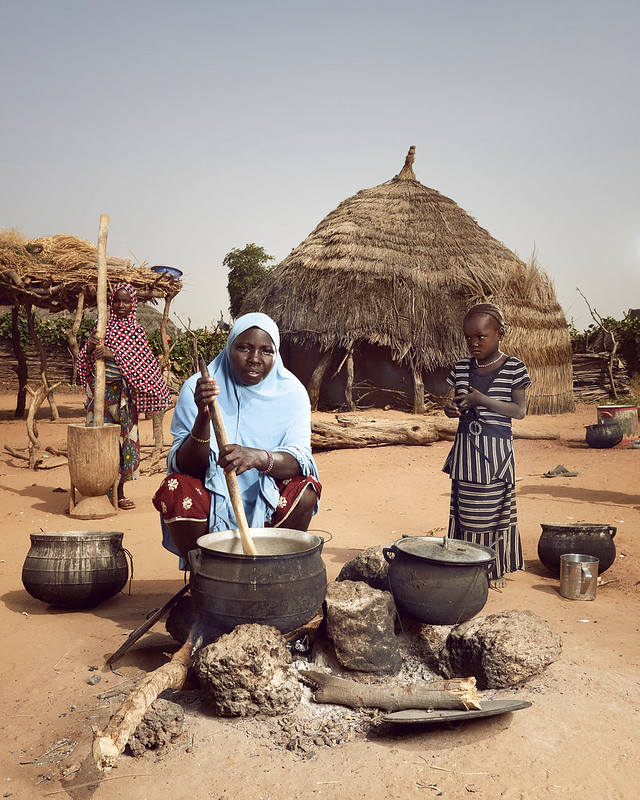Water Access in Niger
 West Africa’s landlocked country of Niger is home to 24.2 million Nigeriens — 12.8 million of which do not have access to clean water, according to WaterAid. Around 80% of Niger dwells within the confines of the Sahara Desert where temperatures average 40℃, continually proving that access to clean water is hard to come across and in rapid decline.
West Africa’s landlocked country of Niger is home to 24.2 million Nigeriens — 12.8 million of which do not have access to clean water, according to WaterAid. Around 80% of Niger dwells within the confines of the Sahara Desert where temperatures average 40℃, continually proving that access to clean water is hard to come across and in rapid decline.
Likewise, 20.6 million people lack proper and acceptable sanitary services, forcing 71% of Nigeriens to practice open defecation. This practice is yielding an increase in septic water across Niger’s urban and rural areas. Due to continuing unsanitary defecation and poor water conditions, bacterial infections such as cholera, trachoma and Guinea worm are spreading throughout Niger. Complications with diarrhea are escalating as the leading cause of death for children under the age of 5, averaging nearly 13,800 annually, according to Water Aid. Additionally, just 22.7% of schools throughout the country have access to drinking water and often lack access to reasonable sanitation facilities.
The Progressive Steps
In 2015, clean water access in Niger received a 7% increase in water sanitary services, as reported by UNICEF. As recently as March 2023, the U.N. and United Nations Economic Commission for Europe are taking steps to increase Niger’s access to clean water, hygiene and sanitation.
Niger is joining a U.N. transboundary water-sharing accord, gaining protected access to Lake Chad, which has seen a decline in volume by 90% in recent years. The country is currently sharing 90% of its water resources with surrounding neighbors Chad and Nigeria. Lake Chad is now under full legal protection after signing into the UNECE Water Convention after the U.N. Water Conference held in March 2023.
Spiking population and declining food supplies are a growing concern as water access in Niger is actively sought out through the new U.N. transboundary water-sharing accord. “Water scarcity in particular threatens the livelihoods of millions of people who depend on rain-fed agriculture and livestock,” said UNECE. “In recent decades, competition for land, water and food has intensified in the region, leading to increased instability, particularly around Lake Chad and in the Niger River basin.”
Impact of the Water Convention
Niger’s recent acceptance of the Water Convention marks a significant step toward enhancing water resource monitoring across Niger, Chad and Nigeria. Concurrently, UNICEF is actively engaged in Niger, working to enhance clean water accessibility through Water, Sanitation and Hygiene (WASH) initiatives. These efforts are vital as WASH is currently aiding 2.2 billion people globally who lack access to safe drinking water.
In a coordinated approach, UNICEF collaborates closely with Niger’s government to implement solutions, including the installation of small water pipes in growing municipalities. This strategy works alongside behavior change campaigns aimed at eradicating open defecation.
Efforts to improve water access in Niger date back to 2003 when World Vision initiated drilling projects in Niger and Mali as part of the West Africa Water Initiative.
Positioned in rural areas and schools, World Vision’s water stations significantly benefit villages, providing clean water to an individual every 10 seconds.
A Global Look
According to World Vision, the lack of access to clean water globally has decreased by millions since 2000. In 2000, 1.1 billion people lacked clean water, which decreased to 771 million by 2020, benefiting 329 million worldwide.
UNICEF is actively committed to addressing global water scarcity. Its initiatives include locating new water sources through advanced sensors, raising public awareness about water usage and its value and providing technical guidance through WASH programs to enhance water access standards.
– Chandler Doerr
Photo: Flickr
